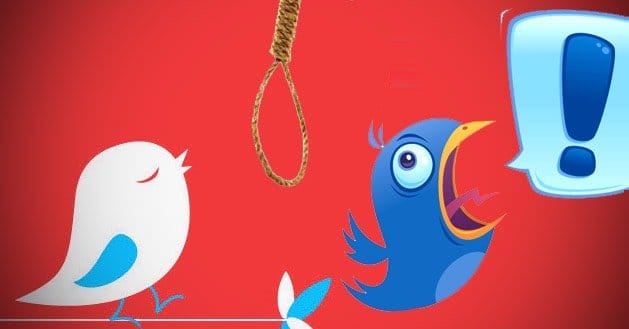 Written by ContentPowered.com
Written by ContentPowered.com
Twitter’s trending algorithm is not the most transparent thing in the world. In fact, it’s actually rather obtuse. What trends when, what volume makes it trend and how long it stays trending are all variable and subjective. There’s no one answer to how many tweets you need to have a particular hashtag trend. Some trending tags have hit trend status in as few as 500 tweets, while others don’t trend until they hit 5,000. Still, you can analyze what trends and when for a bit of insight into how trends work.
Volume of Tweets
The first and most obvious variable for a Twitter trend is the volume of tweets. This can be highly variable. As mentioned above, there have been topics that trend in as little as 500 uses, while other tags get thousands before they ever trend.
How do you influence this variable? Do what you’re already doing, most likely. The goal of any hashtag is to get it mentioned as often as possible by as many people as possible. Well, that and to accumulate posts about a single topic into one easily browsed pseudo-conversation, but that’s kind of the same thing.
Hashtag Originality
This one is a little less obvious. If you’re trying to get a tag trending, do a little research and look for similar tags. Tags that involve the same words or similar subjects can interfere with your trending goals. Try to make sure you’re not using a misspelled version of a more popular hashtag; unless you’re doing it for commentary on the original and have the volume to back it up, it won’t trend.
How do you influence this variable? Try to come up with an original hashtag idea for your Tweets. Keep it short and memorable whenever possible. A long hashtag will have a harder time trending, not to mention taking up valuable characters that your users need for their posts.
Tweet Density
Tweet density ties in to both of the above variables. It’s hard trying to resurrect an old tag or work on an ongoing campaign to get it trending. The older a tag is, the more drastic a spike it needs to reach trending level. An original tag can trend easier because it had no previous uses to skew the results. Essentially, you’re trying to build as high a tweets-per-hour figure as possible to hit trending.
How do you influence this variable? Consider time as a factor. If a hashtag peaks and fails, it will likely be harder to resurrect it and make it trend. It can happen, particularly if a new event brings new life to the conversation, so don’t abandon all of your old hashtags in hopes of trending a fresh new tag. Just don’t count on an old tag gaining that viral explosion of popularity.
Geographic Saturation
Part of the trend calculation is where you’re looking at trending. There are, essentially, two types of trending. There’s local trending, which takes account the location and interests of the user in question. Then there’s global trending, which considers all worldwide trends.
How do you influence this variable? In this case, you really don’t. You just need to be aware that when you think about trending, there are two types of trending. Global trends are much more valuable, of course, as they represent exposure to the entire world. Local trends are valuable for a local perspective, but they don’t have the volume or recognition of global trends.
Competing Topics
Part of trending is the popularity contest. Part of the popularity contest is the competition. If you’re trying to get a subject trending when there are global topics with high volume occupying everyone’s time, you’re not going to break through the noise. Trends can happen in as little as an hour, though, so you have a reasonable chance of trending if you pick times when your users are active but the majority of Twitter users are not. This can be tricky.
How do you influence this variable? Try to push a new hashtag during a time when nothing major is trending, during off hours of the day. The goal is to give yourself as little competition as possible. You may have to do some measurement of your users and of the competition before you attempt this successfully.
Trend Lifespan
Sometimes you may achieve trending status and never know, because the trend begins and ends within the span of an hour. Trends have a life span. Some global trends last weeks or months. Some last days or hours. Local trends can be even more variable, lasting as little as an hour or as long as a few weeks. This is part of why it’s hard to estimate the value of reaching trending status; the audience it can reach, and thus its value, varies greatly.
How do you influence this variable? You can’t, not directly. Instead, what you need to do is encourage higher volume tweeting. A higher volume trend stays a trend longer, because the competition has to work harder to unseat you. The longest lasting trends tend to be world events or social unrest, though that’s not always the case. Unfortunately, a week-long global trend is beyond the reach of a small business unless that trend relates to a horrible scandal.
Getting a Tweet to Trend
So, how do you get a tweet to trend? How do you push one of your hashtags over the edge and into the sidebar?
- Avoid constant hashtag spam. Tweeting repeatedly about your favorite hashtag won’t help if no one else picks it up to run with. Even if you get a handful of friends to help, part of trending is expansion; if no one is retweeting and broadening the audience of the tag, it won’t trend.
- Try to start your trend in a time zone that’s beneficial for your audience. This means, in particular, avoid the U.S. east and west coast prime times. It’s easier for foreign trends to rise up, particularly locally, when most of the United States is asleep. Of course, this isn’t valuable advice if you’re a U.S. based small business.
- Target influential Twitter users and try to get them to add their commentary to a hashtag. There’s no faster way to reach a large audience than getting someone with a larger following than you to do it.
- Don’t try to make the hashtag conversation exclusive. Don’t try to rule it or own it. If it’s going to trend, it’s going to take a life of its own. Unless it’s something you’re running on a global scale, it’s not something you have control over once it gains legs. If you try to control it, you’re making it harder for new users to join in the conversation, limiting its ability to trend.
Above all, keep trying. You won’t trend with every tag. You might not trend very frequently at all. Persistence pays off, however, so you might as well keep inventing and using tags for your conversations.


